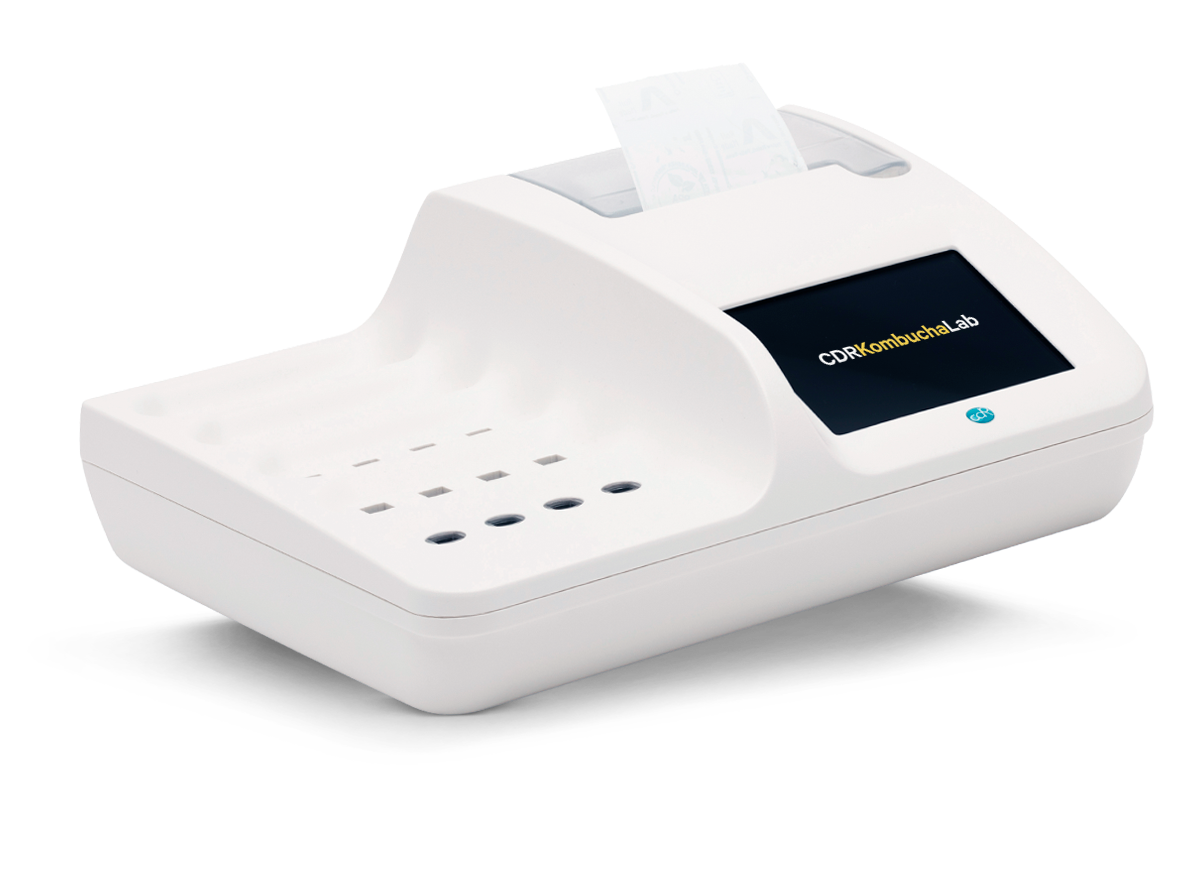Determination of Total Lactic Acid in Kombucha
During fermentation the symbiotic culture of bacteria and yeasts promotes the formation of lactic acid of its D and L enantiomers, as well as other organic acids. The quantity of lactic acid can influence the organoleptic characteristics of the finished product. The possibility of its control during fermentation and in the finished product is therefore an important quality parameter for this type of beverage.
Method
Test type: End Point.
Time testing: 6 minutes.
Analysis sessions with multiple samples are possible for up to a maximum of 16 tests for CDR KombuchaLab and 3 tests for CDR KombuchaLab Junior.
...
Sample treatment
For precise and repeatable analysis, degas the sample using the ultrasonic bath (code 222062) and clarify it, if necessary, using the centrifuge (code 222061).
Principle of the test
D-lactic and L-lactic acids are oxidized through an enzyme to pyruvic acid, producing NADH. The increase of absorbance, measured at 366 nm in end-point, is directly proportional to the concentration of lactic acid in the sample. The result is expressed as ppm.
Calibration curve
The calibration curve of the CDR KombuchaLab, obtained by comparing the CDR method with the enzymatic method for the determination of total lactic acid (D+L), confirmed an excellent linearity of the system over the entire measurement range.
...
Reagent test Kits
Measuring range
| Analyses | Measuring range | Resolution | Repeatability |
|---|---|---|---|
| Lactic acid L+D | 50 - 3500 ppm | 1 ppm | 73 ppm |
The Analyzers for process and quality control in kombucha brewing
CDR KombuchaLab
Complete analysis panel, supplied already configured
Up to 16 determinations simultaneously
Possibility of carrying out analyses of the same sample
Integrated printer
Full connections (LAN - USB - Bluetooth barcode/QR code reader)
CDR KombuchaLab Jr
Partial analysis panel, customisable configuration
Up to 3 determinations simultaneously
Wireless connection to external printer
USB connections
